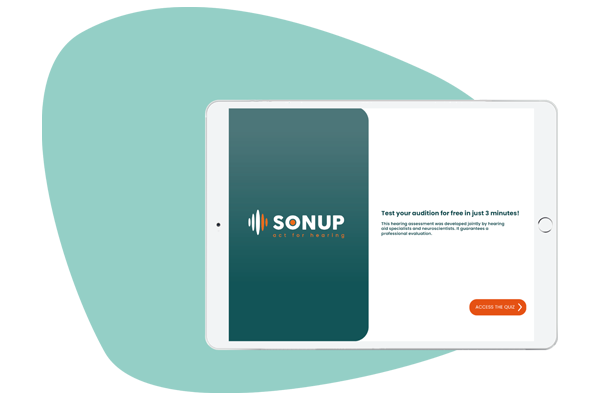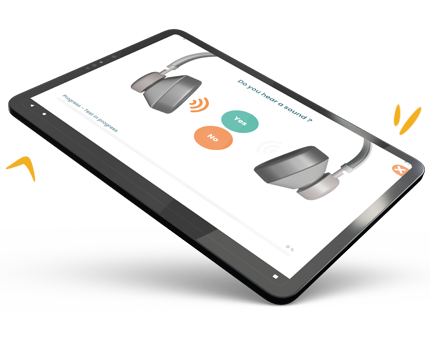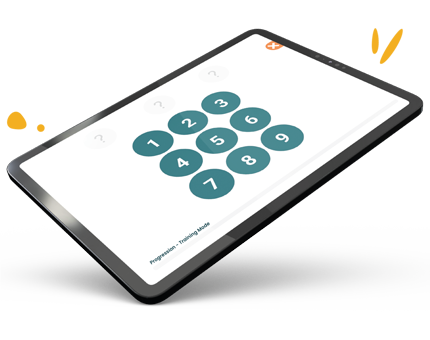
A 3-minute test is sufficient to detect hearing problems that can be treated with hearing aids.
Offer hearing assessment through games, to make hearing aids less dramatic.
This is a screening test to see if the patient HEARS correctly in both ears.
Four main frequencies are presented in the headphones at different intensities. The objective is to know if these frequencies are perceived at low intensities. For this test to be reliable, it is imperative that the equipment be calibrated. That’s good news, because SONUP can rely on the innovative calibration technique developed in-house!
However, for the test to remain reliable, it is best to perform it in a quiet area such as the privacy or eye exam room.
Scientific publication in the International Journal of Audiology : “Validation of a tablet-based application for hearing self-screening in an adult population”


It is a test to assess if the patient UNDERSTANDS correctly.
Words* are presented in the headset, accompanied by background noise. This one is loud enough to mask the sound environment, but obviously not traumatic for the ears. This technique increases the robustness of the test even in non-calm environments. The test will look for the patient’s intelligibility limit in noise. This value is compared to that of normal hearing subjects.
Unlike the SoTone test, the SoNoise test can be performed in different types of sound environments because the test noise covers the room noise. It can be offered on the sales table (as a health game) and in the main area of a pharmacy for example.
Scientific publication in Frontiers in Audiology and Otology : ”Development and validation of a French speech-in-noise self-test using synthetic voice in an adult population”
SONUP brings the test to the patient, not the other way around. We rely on an inter-professional and local network of partners who use our solution. Together, they make virtuous synergies possible for the benefit of patients.
These healthcare professionals facilitate the entry of hearing-impaired patients into the healthcare system, and SONUP acts as a trusted third party to answer their questions throughout the healthcare process.
Yes, they were designed by our team of audiologists (ENT Professor, Doctors in neurosciences, audiologists) at the University of Montpellier. The tests are systematically validated scientifically through clinical studies. This guarantees reliable and reproducible results.
Calibration of the headphones is an essential step to ensure the reliability of hearing screenings. Indeed, each headset has its own acoustic characteristics, particularly in terms of the maximum intensities it can generate at different frequencies. Without calibration, the same hearing test performed with an A headset will not have the same results as with a B headset.
That’s why SONUP calibrates each of its helmets individually. It’s a good thing we have developed an innovative method of calibrating Bluetooth headsets, which we are the only ones to master!
A noise comprehension test has several advantages: